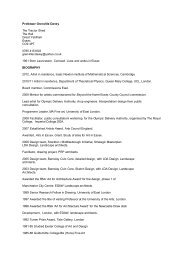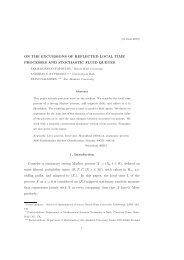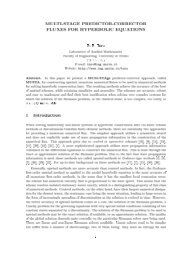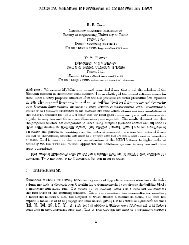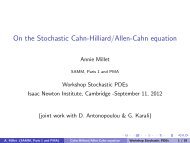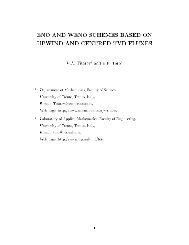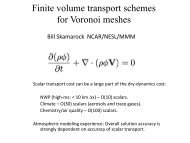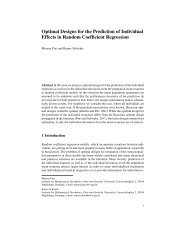A Size Index for Multitape Turing Machines - Isaac Newton Institute ...
A Size Index for Multitape Turing Machines - Isaac Newton Institute ...
A Size Index for Multitape Turing Machines - Isaac Newton Institute ...
You also want an ePaper? Increase the reach of your titles
YUMPU automatically turns print PDFs into web optimized ePapers that Google loves.
10 RAINER GLASCHICK<br />
In the input column, they denote that the input symbol may be any of those<br />
on the tape, and the state table line in fact represents as many lines as there are<br />
symbols <strong>for</strong> the dot. This implies that <strong>for</strong> each dot, all the symbols to be generated<br />
are explicitly used in at least one other line.<br />
In the output column, the meaning of the dot is same symbol as input.<br />
E.g., Hasenjaeger’s machine could either move or punch on the R-tape, because<br />
the Wang instructions are like this, including the option not to move or punch,<br />
which is represented by -. On Hooper’s machine, a pair is given of the new symbol<br />
— which may be the same — and the tape move including no move, explicitly<br />
denoted by -.<br />
Dots in the last column simply mean keep that state.<br />
From a mathematical point of view, there is no difference whether a symbol on<br />
a tape is replaced by itself (output) or nothing done; from a technical point of view<br />
the latter mostly means significantly less circuitry, but it can be easily detected and<br />
is noted here by dots just <strong>for</strong> readability. For counting the numbers to calculate<br />
the TM index, dots are resolved to the respective values.<br />
The condition that tapes are presumed to be cyclic is not noted in the state<br />
tables directly, as are other restrictions.<br />
Note that <strong>for</strong> calculating the TM index, it is irrelevant if e.g. the operations are<br />
noted with two characters, like 0R, 0L, 1R and 1L or four different single characters,<br />
as long as it is used consistently. We just need to expand the dots and count the<br />
number of different input conditions and the number of different actions.<br />
It would have been a nice exercise to trans<strong>for</strong>m each non-binary TM to a binary<br />
TM and calculate the TM index, optionally doing some optimizations.<br />
Please keep in mind that the issues of computational complexity and the ef<strong>for</strong>t<br />
of encoding and decoding are not covered by the TM index.<br />
4.2. A very simple non-UTM. Just to have a very simple TM, we give a (nonoptimal)<br />
state table <strong>for</strong> a non-universal binary TM that appends a mark at the end<br />
of a chain of marks:<br />
s in out s’<br />
1 M R 1<br />
1 b - 2<br />
2 b M 2<br />
2 M - 0<br />
It has two states, two input symbols b,M and three output actions R,M,- so the<br />
state-symbol product is 4, but the TM index is 2 · √ 3 = 3.46, because the L action<br />
is not used. The colour count is 4 instead of 6 <strong>for</strong> the same reason.<br />
4.3. Moore’s machine. This machine, published in [Moore1952], was perhaps the<br />
first multitape machine with a small number of states with a fully published state<br />
table. Also, Moore discussed the conditions to physically build such a machine and<br />
found it feasible, the largest problem being the erasable tape, as also observerd by<br />
Hasenjaeger, see [Hasenjaeger1987].<br />
The machine has 15 states and 3 tapes, one <strong>for</strong> the simulated machine, one<br />
non-erasable tape <strong>for</strong> remembering the next state, and one read-only unidirectional<br />
cyclic tape <strong>for</strong> the coded state table. The coding just writes four numbers <strong>for</strong> each<br />
state, using alternately inverted unary numbers 6 .<br />
The state table is (in the order used by Moore, without his extensive comments):<br />
S PQR PQR S’<br />
1 11. -R- 2<br />
6 2, 1, 3, 4 is encoded 1 2 , 0 1 , 1 3 , 0 4 , i.e. 1101110000




